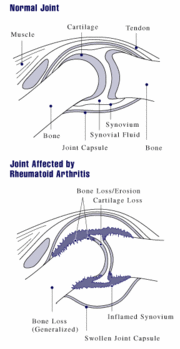Do you have pare in multiple joints? Does the pain occur symmetrically--or do the same joints on both sides of your body hurt at the same time? Or is the pain one-sided? Do you have stiffness in the morning? Do you have pain in your hands, wrists and/or feet?
If you answered yes to any of these questions, you may want to ask your doctor about a condition known as rheumatoid arthritis.
It is a serious, sometimes debilitating, autoimmune inflammatory ailment that affects the joints, hands, wrists and elbows, and according to medical experts, is increasingly affecting African-American men and women.
Diagnosing the disease is difficult, with doctors saying there is no clear-cut way to make a determination. As a result, doctors rely on answers to questions (like those listed above), medical history, physical exams, lab tests and X-rays.
"We're finding that as obesity increases in the Black population, we're finding more rheumatoid arthritis," says Dr. George Edmond Smith, M.Ed., author of Taking Care of Our Own, a family medicine health guide for African-Americans. "And as people live longer, the incidence of rheumatoid arthritis is increasing, particularly in the Black population. We're working hard to find out why."
Some doctors and rheumatologists have begun recommending exercise to patients (under their care) to help reduce pain and increase flexibility, says Dr. Smith, a family practice physician in Louisiana.
The good news is that drug treatments are available to help ease the pain, including nonsteroidal anti-inflammatory drugs, analgesic drugs and disease modifying antirheumatic drugs.
"We're trying to increase health literacy among African-Americans," Dr. Smith says, "so that they will know these treatments are out there. We want them to seek treatment before the disease becomes debilitating."
COPYRIGHT 2005 Johnson Publishing Co.
COPYRIGHT 2005 Gale Group



